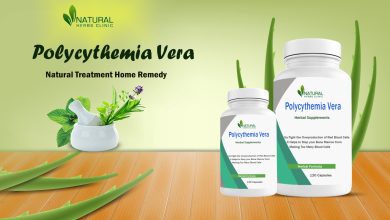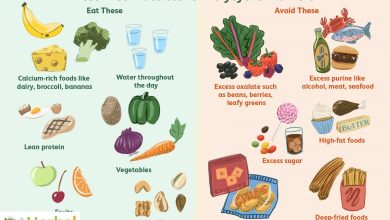New Treatments for Polycythemia Vera: What the Latest Research Reveals

Polycythemia Vera (PV) is a rare, chronic blood cancer that is part of a group of diseases called myeloproliferative neoplasms (MPNs). It is primarily characterized by an overproduction of red blood cells in the bone marrow, which increases blood thickness and raises the risk of clotting events, strokes, and heart attacks. As researchers continue to explore ways to treat and manage PV more effectively, several new therapies have emerged, offering hope for improved outcomes and quality of life.
The new treatments for Polycythemia Vera, what the latest clinical research has uncovered, and how both pharmaceutical and herbal treatments for Polycythemia Vera are contributing to a more comprehensive approach to care.
Understanding Polycythemia Vera: A Brief Overview
Polycythemia Vera (PV) is a rare, chronic blood disorder in which the bone marrow produces too many red blood cells. This overproduction causes the blood to become thicker than normal, which can lead to complications such as blood clots, stroke, or heart attack.
Related Article: Polycythemia Vera Life Expectancy: Can You Live a Normal Life?
What is Polycythemia Vera?
Polycythemia Vera is a type of myeloproliferative neoplasm (MPN) a group of diseases that involve abnormal growth of blood cells in the bone marrow. In PV, the bone marrow makes excess red blood cells, and often, white blood cells and platelets may also be elevated.
This condition is not due to a lack of oxygen or another external trigger, making it a primary form of polycythemia.

Causes
The exact cause of PV is not fully understood, but:
- >95% of cases are associated with a mutation in the JAK2 gene (Janus kinase 2).
- This mutation causes the bone marrow cells to grow and divide excessively, even without the usual signals from the body.
Symptoms
Many people with PV may not notice symptoms in the early stages. As the disease progresses, common symptoms include:
- Headaches
- Dizziness or lightheadedness
- Itchiness (especially after a hot shower — called aquagenic pruritus)
- Red or flushed skin (especially on the face)
- Fatigue or weakness
- Blurred vision
- Night sweats
- High blood pressure
- Enlarged spleen (splenomegaly), causing a feeling of fullness or discomfort in the upper left abdomen
Diagnosis
Diagnosis is based on:
- Blood Tests:
- Elevated red blood cell mass
- Increased hemoglobin and hematocrit
- Elevated white blood cell and platelet counts
- Low erythropoietin (EPO) levels
- Positive JAK2 mutation test
- Bone Marrow Biopsy:
- Shows hypercellular marrow with an increased number of blood-forming cells
- Other Tests:
- Oxygen saturation (to rule out secondary polycythemia)
- Erythropoietin level
Traditional Treatments and Their Limitations
Historically, Polycythemia Vera has been managed using:
- Phlebotomy: Regular removal of blood to reduce red cell mass.
- Low-dose aspirin: To reduce the risk of clotting.
- Hydroxyurea: A chemotherapy agent that reduces blood cell production.
- Interferon-alpha: Used to control blood counts, especially in younger patients.
While these treatments can be effective in the short term, they often come with side effects, and some patients become resistant or intolerant over time. This has prompted the need for new treatments for Polycythemia Vera that are both more effective and better tolerated.
Related Article: The Ultimate Polycythemia Vera Diet Plan: What to Eat & What to Skip
New Treatments for Polycythemia Vera
1. JAK Inhibitors – Ruxolitinib (Jakafi)
Ruxolitinib, the first JAK1/JAK2 inhibitor approved by the FDA for Polycythemia Vera, represents a major milestone. It is particularly used for patients who are resistant or intolerant to hydroxyurea.
How it works: Ruxolitinib targets the JAK-STAT signaling pathway, which is hyperactive in PV patients due to the JAK2 mutation. By inhibiting this pathway, the drug can reduce spleen size, control hematocrit levels, and improve symptoms such as itching, night sweats, and fatigue.
Latest research: Clinical trials (such as the RESPONSE and RESPONSE-2 studies) have shown that Ruxolitinib leads to durable hematocrit control, spleen volume reduction, and overall symptom improvement. These results make it one of the most promising new treatments for Polycythemia Vera.
2. Ropeginterferon Alfa-2b (Besremi)
Interferon-based therapies have long been used in PV, but the newer, long-acting formulation ropeginterferon alfa-2b has significantly improved tolerability and dosing convenience.
How it works: This drug modulates the immune system and inhibits the proliferation of blood cells. Unlike traditional interferon, ropeginterferon is administered only once every two weeks (and eventually monthly), reducing the burden on patients.
Latest research: The PROUD-PV and CONTINUATION-PV studies demonstrated that ropeginterferon not only achieves hematologic control but also reduces JAK2 allele burden, suggesting a potential disease-modifying effect. This makes it a standout among new treatments for Polycythemia Vera.
3. Givinostat – A Histone Deacetylase (HDAC) Inhibitor
Givinostat is an investigational drug that has shown promise in early clinical trials for PV. It works by modulating gene expression through inhibition of histone deacetylases, thereby reducing the proliferation of malignant cells.
Latest research: Preliminary Phase II and III studies show that Givinostat reduces blood counts and symptom burden with fewer side effects compared to traditional treatments. It is especially useful for patients who carry the JAK2 mutation.
Givinostat is still under investigation but represents a potential breakthrough in the field of new treatments for Polycythemia Vera.
4. PTG-300 (Rusfertide) – A Hepcidin Mimetic
Rusfertide is an injectable peptide mimicking the natural hormone hepcidin, which regulates iron metabolism.
How it works: By reducing iron availability, Rusfertide helps to decrease red blood cell production, thus reducing the need for phlebotomy.
Latest research: In the REVIVE study, Rusfertide showed that it can eliminate the need for phlebotomy in a majority of patients while also reducing iron overload. This treatment is still in clinical trials but may soon become part of standard care, especially for phlebotomy-dependent patients.
Emerging Therapies on the Horizon
In addition to the above treatments, several other investigational therapies are being explored:
- Immunotherapies targeting specific PV-related antigens.
- Gene editing tools like CRISPR-Cas9 to correct the JAK2 mutation (still in very early stages).
- Next-generation JAK inhibitors with improved specificity and fewer side effects.
These therapies are currently undergoing clinical evaluation, and their introduction may further broaden the range of new treatments for Polycythemia Vera in the coming years.
Related Article: Navigating the Use of Hydroxyurea for Polycythemia Vera Recovery
Herbal Treatment for Polycythemia Vera
Polycythemia vera (PV) is a rare, chronic blood disorder classified as a myeloproliferative neoplasm. It is characterized by the overproduction of red blood cells, which increases blood viscosity and predisposes individuals to thrombosis and other complications such as strokes, heart attacks, and deep vein thrombosis. Although conventional treatments, including phlebotomy, aspirin, and cytoreductive therapy, remain the standard of care, there is growing interest in the potential role of complementary therapies, particularly herbal medicine, to support symptom management and overall Health. This article explores the role of Herbal Treatment for Polycythemia Vera, its benefits, limitations, and the need for scientific validation.
The Appeal of Herbal Medicine in Chronic Illness
Herbal medicine has been used for centuries across various cultures to manage chronic diseases. Many herbs are known for their anti-inflammatory, antioxidant, and circulatory benefits. Patients with PV often turn to herbal treatments for several reasons:
- Desire for a natural approach: Herbal treatments are seen as more “natural” and less invasive than pharmaceutical drugs.
- Managing side effects: Herbs may help alleviate side effects of conventional therapy, such as fatigue or gastrointestinal discomfort.
- Symptom relief: Some herbs can address symptoms like itching, poor circulation, and fatigue.
- Immune modulation: Certain herbal treatments may support immune system balance, which is relevant in hematologic disorders.
Despite these potential benefits, it is essential to recognize that herbal medicine should not replace conventional treatment for PV but may serve as a supportive therapy when used responsibly and under medical supervision.
Commonly Used Herbs for Polycythemia Vera Support
While there is limited clinical research specifically targeting herbal treatments for PV, some herbs have properties that may be beneficial in addressing its symptoms or complications. Below are several herbs commonly explored in this context:
1. Ginkgo Biloba
Ginkgo biloba is known for its vasodilatory and antiplatelet effects. It can improve blood flow and reduce the risk of clot formation, a significant concern in PV. Additionally, it may help reduce cognitive fog and dizziness associated with increased blood viscosity.
2. Turmeric (Curcuma longa)
Curcumin, the active compound in turmeric, has potent anti-inflammatory and antioxidant properties. It may support cardiovascular health and reduce chronic inflammation, which is often elevated in myeloproliferative disorders.
3. Gotu Kola (Centella asiatica)
Gotu kola is used in traditional medicine to enhance circulation and wound healing. It may be beneficial for patients experiencing poor peripheral circulation or vascular complications due to thickened blood.
4. Reishi Mushroom (Ganoderma lucidum)
Reishi is considered an adaptogen and immune modulator. It may help regulate the immune system and reduce fatigue, and some studies suggest it has anticancer properties. It is popular in traditional Chinese medicine for supporting blood and liver health.
5. Nettle Leaf (Urtica dioica)
Nettle leaf contains iron and vitamins that can help combat fatigue. It also has mild diuretic and anti-inflammatory effects, potentially aiding in detoxification and reducing inflammation in PV patients.
6. Hawthorn (Crataegus spp.)
Hawthorn is widely used for cardiovascular support. It may help normalize blood pressure, strengthen the heart muscle, and improve circulation — all relevant concerns in managing PV symptoms.
Related Article: Painful Burning or Numbness of the Hands and Feet: How to Relief
Lifestyle Modifications Complementing New Treatments
In addition to pharmaceuticals and herbs, patients can take active steps to support their treatment plans:
- Hydration: Staying well-hydrated helps reduce blood viscosity.
- Exercise: Regular physical activity supports circulation and cardiovascular health.
- Diet: A heart-healthy diet low in saturated fats and rich in fruits, vegetables, and whole grains can reduce inflammation.
- Avoiding smoking and excessive alcohol: These can worsen PV symptoms and increase the risk of complications.
Patient-Centered Care and Monitoring
The management of PV is increasingly moving toward individualized, patient-centered care, where treatment decisions are based on genetic markers, symptom burden, risk category, and patient preferences.
With the availability of new treatments for Polycythemia Vera, the need for regular monitoring is greater than ever. This includes:
- Complete blood counts (CBC)
- JAK2 mutation burden monitoring
- Iron studies
- Spleen size assessment via imaging
- Symptom tracking questionnaires
Early intervention and continuous evaluation help to prevent disease progression and improve quality of life.
Conclusion
Polycythemia Vera is a complex condition, but recent advances have significantly changed how it is treated and managed. New treatments for Polycythemia Vera, such as JAK inhibitors, long-acting interferons, and emerging therapies like hepcidin mimetics, are not only helping to control the disease more effectively but are also aiming to modify its course.
While traditional therapies remain relevant, the expanding array of targeted options provides hope for more personalized and effective care. Alongside these medical innovations, herbal treatment for Polycythemia Vera is gaining attention as a complementary approach, though it must be used with caution and under medical supervision.
Related Article: Polycythemia Vera Management Often Does Not Follow Guidelines




